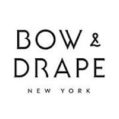A Department Store with a Difference: Q&A with Neighborhood Goods
by Hugh Williams on 15th Nov 2019 in News


In this Q&A with DTC Daily, Matt Alexander, co-founder & CEO of Neighborhood Goods - a challenger to traditional department stores, which is offering a home for direct-to-consumer brands, talks about why the business offers opportunities for brands looking to get into traditional retail, a new funding round, and launching a New York location.
Can you explain how Neighborhood Goods works with direct-to- consumer brands?
We describe ourselves as being a new type of department store. The reality is that we’re not really much of a department store, but invoking such a traditional idea provides a useful expectational and understandable framework for people.
From a high-level, we are creating fixed physical spaces — typically 10,000 to 20,000 feet in size — wherein we ostensibly enable brands to host pop-ups. Unlike a typical pop-up, though, the cost is much less to the brand for the space, while we also then provide staffing, build, design, and data to them.
The result is a cohesive room filled with all manner of different brands that you wouldn’t typically find in physical retail. For consumers, they’re able to shop up-and-coming concepts — and some well-established concepts, too — in a dynamic new space. For brands, they’re able to drive sales, acquire customers, test merchandising strategies, experiment with new product types, and the like on a much more efficient and simple basis than running their own store, all the while profiting from brand adjacency to other exciting concepts, events, and otherwise.
Returning to the department store comparison, similarities exist in the fact that we have a curatorial point of view in a cohesively designed space, staffed by our own employees. Unlike a traditional department store, however, the brands are rotating in and out frequently, our model doesn’t focus exclusively on sales, we don’t purchase product at wholesale, and so on.
What do you offer DTC brands that regular retail partners don't?
We provide analytics to our brands to give them a sense of traffic and behaviour within our store. Coupling this with sales data, we’re able to assess many different aspects of a brand activation at Neighborhood Goods, as well as being able to mutually focus on different measurements of success for brands.
To that point, brands aren’t necessarily looking to expand into physical retail for driving transactions. They might see physical space as being a tool to drive awareness, customer acquisition, and the like. Others might see it as a community centre to bring their existing customers together and enhance lifetime value. And so on. With Neighborhood Goods, as we have such a fluid and ever-changing space — and flexible model — we can support all manner of these goals.
At Neighborhood Goods’ first location, we host about two to three events per week. Some are small (e.g., a live local musician) while others can be much larger (e.g., Serena Williams launching a new product-line in-store alongside a live podcast with Ashley Graham). With these — and our restaurant — we provide a more dignified and exciting reason for people to visit than transactions alone, which fosters a more positive relationship with the consumer than would be typical in a department store.
For brands, our logistics and modular format also allow for a lot of playfulness and experimentation around merchandising, product mix, and spatial design. We can assess all manner of different formats — always focusing on storytelling on behalf of the brands — and capture data in doing so.
You guys have just raised USD$11m - how are you planning on using these funds?
We’ve been fortunate to raise roughly USD$27m across our Seed and Series A rounds, which has given us a good amount of runway and opportunity for expansion.
We’re investing in people, naturally, to help unlock deeper relationships with our brands. And we’re investing in technology to provide real-time data for our partners, too.
Beyond those, much of our capital plans revolve around physical expansion. We’re planning a good deal of locations for 2020 and beyond, so that will be the primary area of our focus.
A lot of the brands you work with started life selling purely online. Why do you think they are now looking for a new channel?
Customer acquisition costs are rising online. Lifetime value, meanwhile, is dropping for these customers once acquired.
Physical retail allows for much lower acquisition costs and much higher lifetime value, inasmuch as the spaces can be used to foster longer-term loyalty. But physical retail is expensive and cumbersome to explore. Hence why we exist.
You are looking to launch a location in New York, to go with your store in Plano. Why is NYC the next market for you guys?
We were presented with the opportunity to open at the entrance to Chelsea Market in New York, which offers a number of valuable features to us and our brands.
Looking at New York, many direct-to-consumer brands experiment with pop-ups in Soho. There’s a good amount of vacancy in the area, while it’s a good customer for many of these brands. Meatpacking, on the other hand, is fairly fully leased, whilst also boasting an enormous amount of traffic from an ideal demographic of potential customers. The result is that it’s too expensive for — or just unavailable to — DTC brands to open permanent stores (or pop-ups).
Inasmuch as we’re a discovery and delivery mechanism for brands and consumers alike, the Chelsea opportunity presents a huge amount of opportunity for brands to experiment in an otherwise inaccessible area with a hungry and well-suited customer base.
Following Chelsea’s opening, we’re excited to open on South Congress in Austin, Texas, too.







Follow Fast Growth Brands